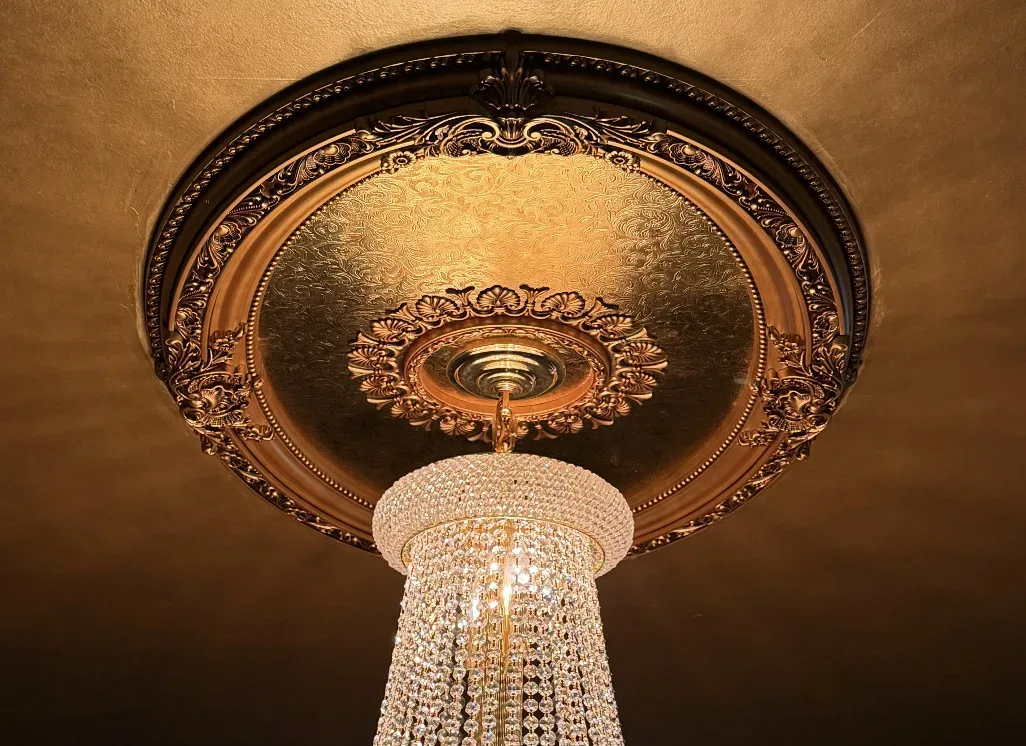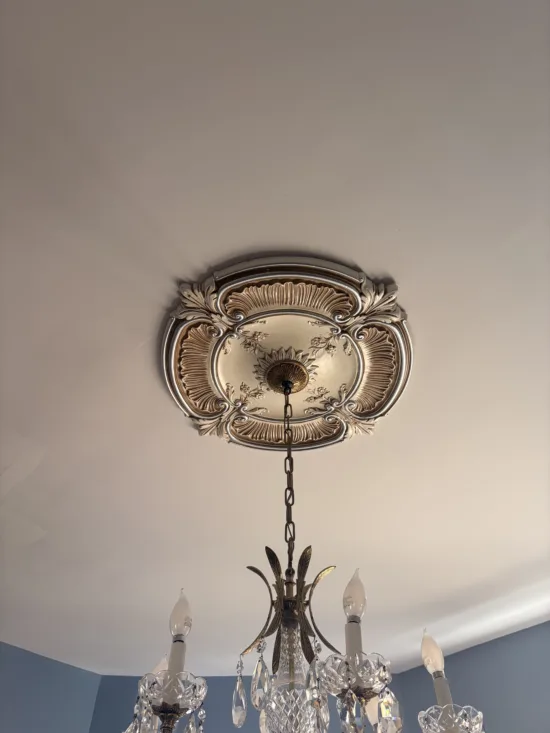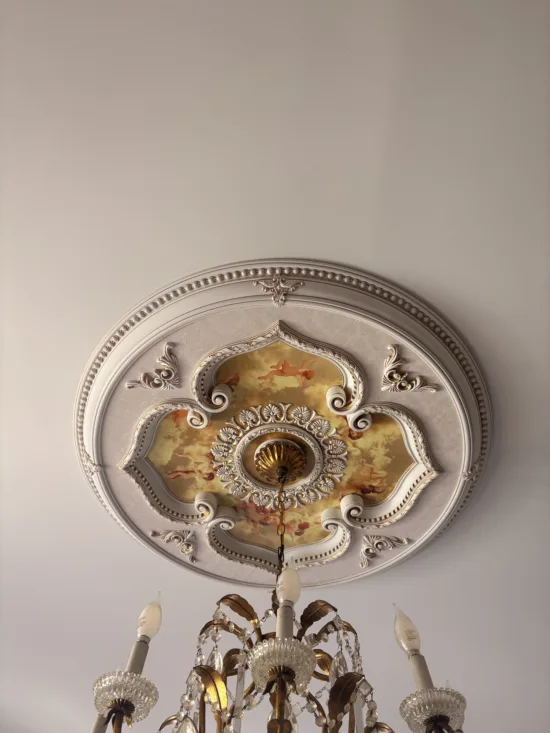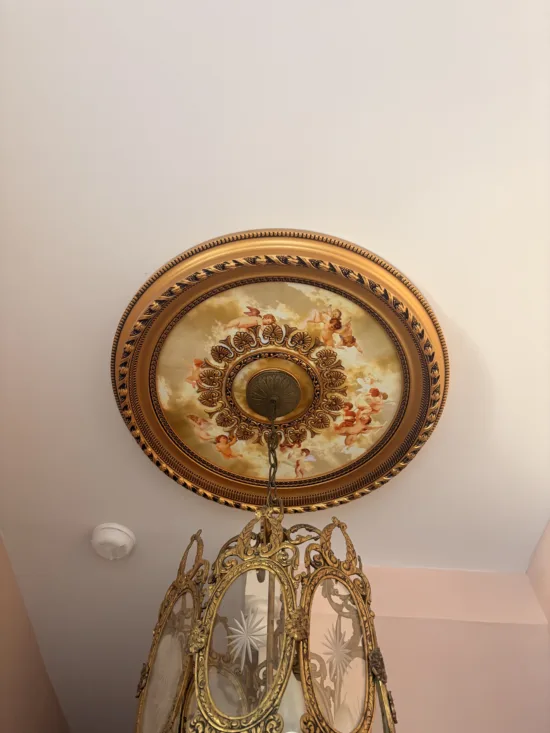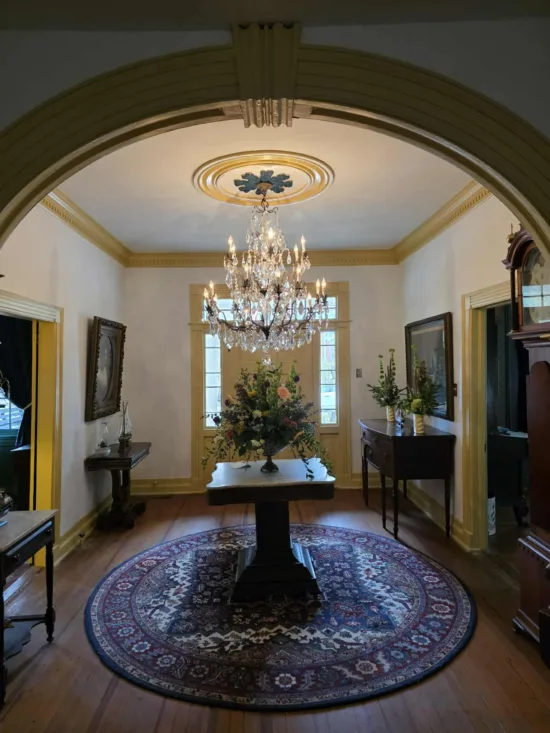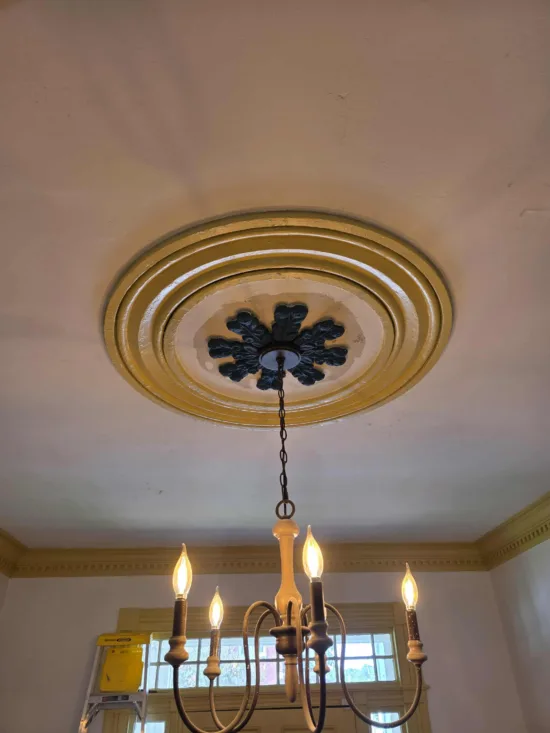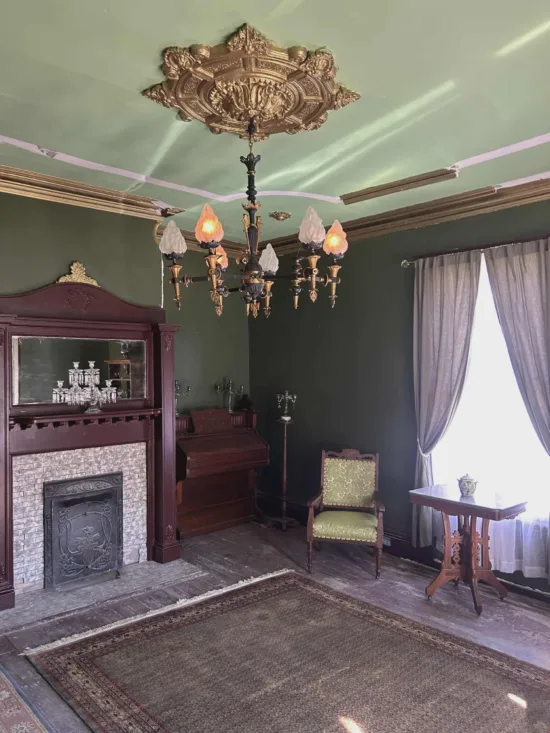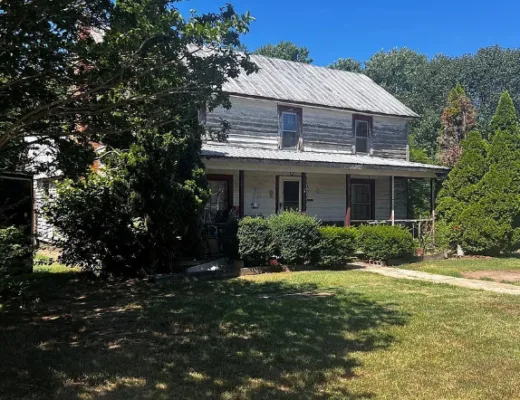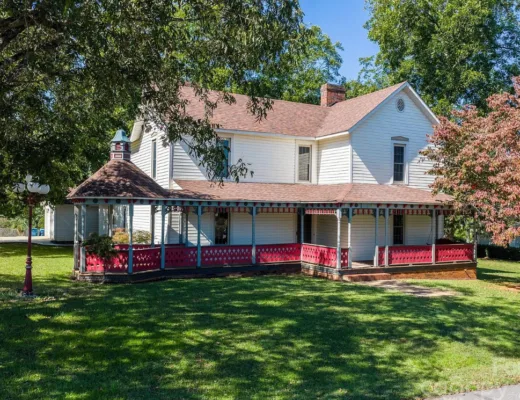When you step into an old house, the details overhead often say just as much as the ones underfoot. Ceiling medallions were never JUST decoration, they made a statement but also had a practical use. In homes lit by candles or gaslight, these plaster designs helped disguise soot marks and added a finishing touch to the center of the room.
A Brief History
Ceiling medallions began appearing in the 18th century and became especially popular throughout the 19th. They started as small, simple plaster rings that framed chandeliers and gas fixtures, but by the height of the Victorian era, they had grown elaborate — layered with scrollwork, leaves, and floral patterns.
Their purpose wasn’t purely ornamental. Candlelight and early gas ligthing left dark soot stains above fixtures, and medallions helped mask the marks. The plaster itself also offered a measure of fire protection, acting as a barrier between flame and ceiling lath.
Designs by Era
Each architectural period had its own style of ceiling medallion. They were often designed to complement the moldings and motifs already present in the home.
- Federal and Greel Revival (late 1700s-mid 1800s): Simple rosettes, wreaths, and geometric shapes — elegant and symmetrical.
- Victorian Era (mid-late 1800s): Highly detailed with layers of floral scrollwork, fruit, and acanthus leaves. Larger homes often featured multiple medallions in formal rooms.
- Colonial Revival and Craftsman (Early 1900s): Plainer, flatter medallions with restrained ornamentation. Some homes replaced them entirely with simple light canopies.
How They Were Made
Traditional medallions were made from Plaster of Paris, cast in molds or shaped directly on the ceiling by hand. Skilled plasterers used wood, wax, or clay molds to create the designs, reinforcing them with hemp or horsehair for strength.
Once the medallion was ready, it was pressed into a fresh later of wet plaster on the ceiling and carefully blended in so that no seams showed. Each piece was hand-finished; no two were exactly alike.
Later in the 19th century, composition medallions became common. These were lighter, factory-produced pieces made from paper-mache, sawdust, or resin-based mixtures, making them easier and cheaper to install.
Restoring or Replacing a Medallion
If your home still has original medallions, they’re worth preserving. These plaster details are one of the few remaining signs of a home’s craftsmanship!
For Restoration:
- Inspect for cracks or separation from the ceiling. Loose medallions can often be stabilized with screws and plaster adhesive.
- Use lime-based or plaster-compatible materials for patching — avoid joint compound or caulk.
- If paint is obscuring the details, strip carefully with gentle methods instead of sanding.
For Replacement:
- Reproduction medallions can be cast from historic molds or purchased in lightweight plaster and resin forms.
- Choose a design proportionate to the room’s size and ceiling height — too large can overpower, too small can get lost!
- When possible, stick to plaster or composite materials, for a more authentic appearance.
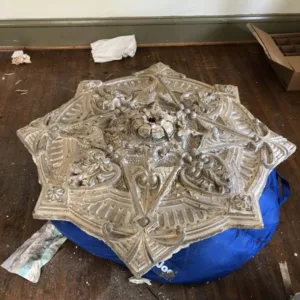
Why They Matter
Ceiling medallions might seem like small details in the grand scheme of a house, but they represent a much larger story about craftsmanship and design. They were part of a time when beauty and function worked hand in hand — when ceilings were treated with the same attention as floors and walls. Restoring one brings back that quiet sense of balance and pride that defined the architecture of the past!

